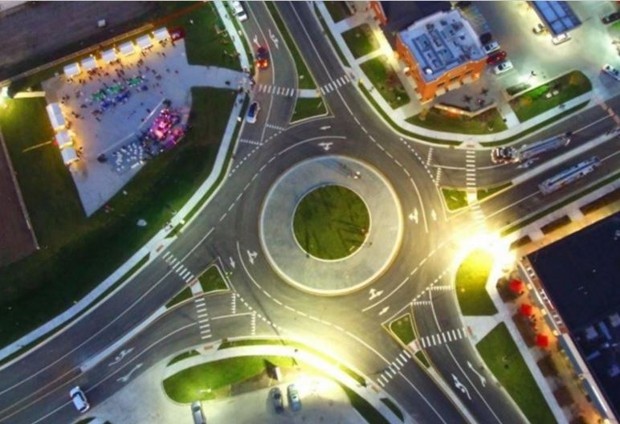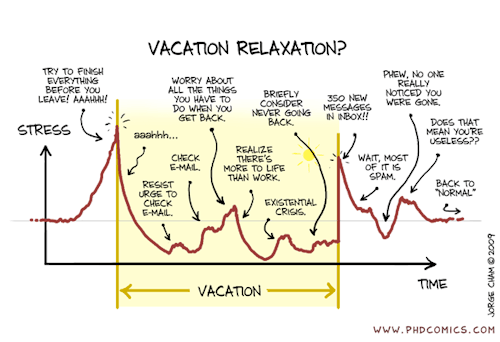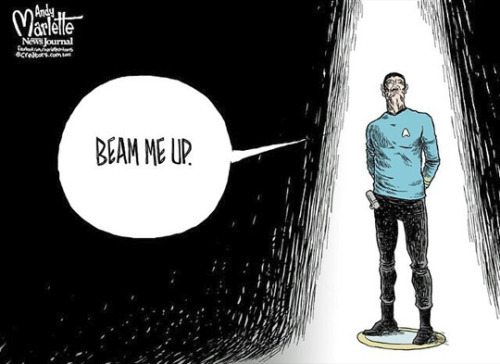Van Morrison - Days Like This (Official Video)
Ray Muller
Shared posts
pussysoupforthesoul: why do ppl treat random folks on tumblr like they’re street performers working...
why do ppl treat random folks on tumblr like they’re street performers working for tips?? y’all be up in ppl’s inboxes like “hi do u think u can stop posting about xyz?? it’s getting really annoying :(“ ummm u do realize that i am just some stranger on the internet posting random shit im thinking about n not some kind of entertainer right…?
Patients Can Now Ride-Hail to the Hospital
It’s been estimated that 3.6 million Americans miss or show up late to doctor’s appointments each year due to a lack of reliable transportation. That’s a public health problem: Skipped tests and check-ups mean lost diagnoses, lapsed prescriptions, and wasted time and money on the part of the healthcare system.
But the transportation landscape is changing. With about 75 percent of the U.S. population living in a county with access to an on-demand ride-hailing service, some patients are turning to Uber and Lyft as a means to medical care, whether it’s because they lack a car, live far from transit, or simply prefer not to drive. Now, Uber is making the relationship official. On Thursday, the company announced the launch of Uber Health, a platform that will allow healthcare providers to call their patients Uber rides to and from appointments, all using the Uber interface. Starting this week, the service will be available in the 250 cities where Uber operates.
Using the new Uber Health dashboard, medical providers can coordinate pick-ups and drop-offs for their patients. When it’s time for a pickup, users are notified via text message (accessible on flip phones and iPhones alike) and given a link to track drivers on a map. For riders who don’t use mobile phones, there’s an analog version: Healthcare administrators can provide paper print-outs with passenger pick-up locations, driver license plate numbers and car models. The rides can be scheduled minutes before a meeting, or up to 30 days in advance; the costs will be covered by providers themselves.
From a driver standpoint, nothing changes. The Uber Health app is HIPPA compliant, which means all medical information is kept private. On a trip to the hospital, a driver won’t know whether a rider is traveling to the hospital using the traditional Uber app—to visit a loved one, for example—or is meeting a doctor through the healthcare platform. “In the interest of patient privacy we’re not sharing any additional information beyond what’s necessary,” said Jay Holley, Uber’s head of partnerships.
Even before the Uber Health pilot began eight months ago, ride-sharing apps had already begun to disrupt the healthcare transportation sphere. In 2016, Uber partnered with the nonprofit healthcare system MedStar Health and the medical transport start-up Circulation to book rides and set appointment reminders. Lyft also joined forces with National MedTrans Network, a non-emergency medical transportation service, to expand their coverage network.
Elsewhere, Uber’s public health effects have emerged more accidentally. In October, economists from the University of Kansas found that when Uber starts operating in a city, the volume of ambulance calls decreases significantly. They inferred that in the event of a medical emergency (at least one that doesn’t require stabilization en route to a hospital), people often find it preferable to call a ride-sharing service rather than an ambulance. The appeal seemed to be two-fold: Ubers took an average of three minutes to arrive in urban areas to ambulances’ eight, and even at the highest “surge” levels cost much less than ambulance bills. That’s why cities, including Washington, D.C., are pursuing policies that nudge hospital-bound travelers into Ubers or similar ideas, such as Memphis’ paramedic-hailing service.
Holley notes that Uber Health is not intended to “disrupt” the ambulance industry. Indeed, individual Uber trips won’t likely replace ambulance use either, according to economics professor David Slusky. They could actually free up more emergency vehicles for people with life-threatening conditions in need of truly urgent care. “If we had infinite ambulances, we could take everybody in them, and therefore if somebody had a situation where an ambulance would save their life they’d always be in one,” he said. “But we don’t have them.” To pick up the slack, Uber could help.
The results of a trial period suggest as much. Uber Health has been tested in about 100 hospitals since July. One of them, Georgetown Home Care, which connects elderly patients in Washington, D.C. with in-home non-medical care, has used the service to transport patients to doctors’ appointments with caregivers by their side. Before the trial began, caregivers were already using UberX with patients, sometimes daily. Now, instead of ordering one Uber ride at a time as they did pre-Uber Health, office administrators can control and track a fleet of 50 cars at any given moment. “It’s an effective way of getting clients to appointments and moving them around the city in a safe way,” said John Bradshaw, Georgetown’s CEO.
Elderly patients can be wary of getting into a car with a stranger, according to Bradshaw. But the status quo isn’t ideal, either. Not all caregivers have access to a car, nor do they all know how to drive. And even when they do, “typically what’s going to happen is [caregivers] have to drop them at the door, leave them, find a parking spot,” said Bradshaw. “Potentially, if that client has dementia, you’re hoping they’re still there [when you go out to meet them].” But with a dedicated Uber driver, the caregiver is never without the client.
NYU Langone, a cancer center in New York City, has also used Uber Health to transport women undergoing breast cancer treatment between ambulatory care centers and the operating room. It’s a quick trip that doesn’t require an ambulance, but for patient comfort, a subway isn’t ideal. Uber, however, “has been a good alternative to the normal car service that we have used in the past,” Jamie Liptack, an NYU Langone communications officer, explained. The platform is easier to navigate, and drivers are cheaper to hire.
Uber’s benevolent streak hasn’t emerged in a vacuum. The decision to offer rides that ostensibly save lives comes on the heels of several public dings to the brand: former CEO Travis Kalanick’s ouster, data breaches, and sexual harassment, and wage theft claims. On Thursday, researchers from MIT released a study showing that Uber and Lyft drivers earn a median profit of $3.37 an hour, far below minimum wage. Reputation aside, the app isn’t perfect. It may be a challenge to track drivers in infrastructural labyrinths like a medical complex. Nor is it perfectly safe: While Uber conducts background checks on all drivers, the company doesn’t do any extra vetting of Uber Health drivers, Holley said, citing HIPPA protections.
It's also not yet clear how Uber Health would interface with Medicaid. Conceivably, providers could charge an Uber bill to Medicaid, just as they would another healthcare transportation option, such as a bus pass or paratransit shuttle. An Uber representative said that no medical providers using Uber Health have tried to do this yet. But it matters whether they’ll start. Many of the lowest-income Americans who don’t have adequate transportation access may also be insured by Medicaid and Medicare, if they’re insured at all.
Furthermore, while Uber’s reach is vast, it is not comprehensive. Rural areas with few on-demand drivers and few modes of public transportation—communities with some of the worst healthcare gaps in the country—will miss out on the benefits of this particular innovation.
Still, in cities, many patients are manifestly in need of better ways to get around. In Columbus, Ohio, for example, the city’s frail bus network barely connects to the parts of town with the worst health disparities, including staggering rates of infant mortality. As CityLab has previously reported, it’s no mystery why 23 percent of women with prenatal appointments at Columbus’ free clinics don’t make it to the doctor. At least for some, an all-expenses-paid, on-demand ride could make the difference between sickness and health.
A Chat With the Mayor of Roundabout City, USA
In Carmel, driving around in circles isn’t a symptom of being lost; it’s a way of life. Despite its small size, the Indiana city has more roundabouts than any other burg in the U.S. Much of that has to do with its Republican mayor, Jim Brainard, who has seemingly waged a campaign to pave all of Carmel with these traffic-calming, accident-reducing rings.
Given that Carmel installed its hundredth roundabout this November—and has since debuted two more—CityLab thought it’d be good to query Brainard about his roundabout obsession. Here’s the (slightly condensed) interview:
What initially got you interested in roundabouts?
I first encountered roundabouts during a graduate-school trip to England. I watched how efficiently traffic flowed through the intersections. Drivers were yielding to traffic and to bikes and pedestrians. No unsightly traffic signals and no long lines or congestion. It made me wonder why the U.S. had not built more roundabouts.
Will Carmel ever have enough roundabouts?
We plan to add 28 more in 2017 and 2018 and then our long-range plans also have several more. All told, we probably have another 35 to 40 roundabouts to build before we finally are finished.
What do you think is a common misconception about roundabouts?
The most common misconception is that motorists will be so confused by the rules of roundabouts that they will make mistakes and the roundabouts will become unsafe. But the facts prove otherwise. At most all times of the day, motorists simply slow down as they approach a roundabout. They look to the left, and they yield to traffic that is already in the roundabout. It is that simple.
Studies show a 90 percent reduction in fatal accidents, 80 percent reduction in accidents with serious injury, and 40 percent reduction in all accidents at these intersections when a roundabout replaces a traffic signal. When there are accidents, they are typically low impact, at an angle (rather than a deadly T-bone crash), and result in mostly minor damage.

What do you think is their most unheralded benefit?
The thing most people don’t know is how much money is saved by converting traffic signals into roundabouts. Our city engineer’s office has found that on average, roundabouts in Carmel have cost $250,000 less to build than signalized intersections and they are much less expensive to maintain than signalized intersections, saving our taxpayers $5,000 per intersection per year in electricity costs.
And because we have eliminated most all of our traffic jams, we spend much less time sitting in traffic and idling our engines, which is saving about 24,000 gallons of gas per year per roundabout, based on federal highway studies, which also leads to reduced vehicular emissions and improved air quality. With 102 roundabouts and the cost of gasoline at $2 a gallon, the public is saving about $4.9 million per year.
Do you expect the Trump administration to have an impact on Carmel in terms of infrastructure, climate change, or any other issues you've been passionate about?
I have heard that our president-elect is planning to boost spending in infrastructure, and that is a good thing for cities across the nation. It is important that local and state governments spend their money wisely by not building sprawl that is environmentally or financially unsustainable. The funds should be spent on repairs, safety improvements, public transit, and completing existing highway grids. Many of our roundabout projects—and other projects—have benefited from federal support over the years. We have a number of projects on our long-term plans that would be excellent candidates for that.
On climate change, I am hopeful that we continue to improve our drinking water, air quality, and work toward energy independence thereby avoiding costly involvement in maintaining the Middle East oil supply. There are multiple reasons to support the reduction of fossil fuel usage that will improve our quality of life and make our country more resilient and safer.








